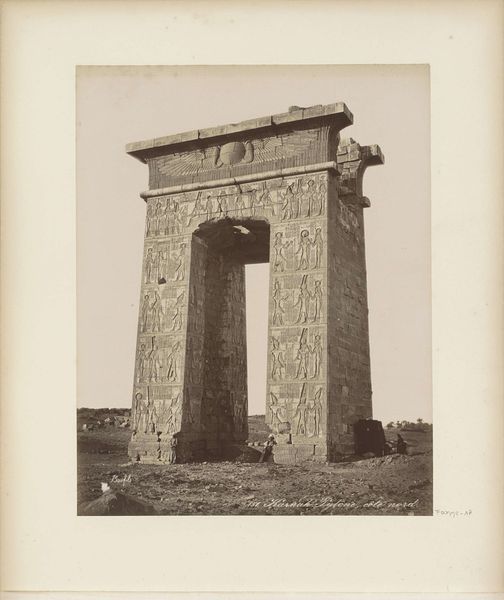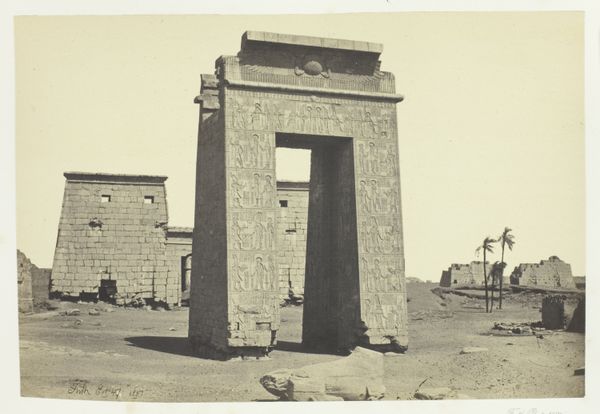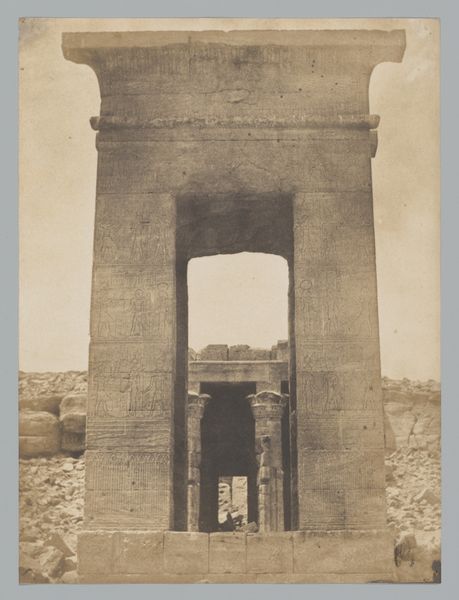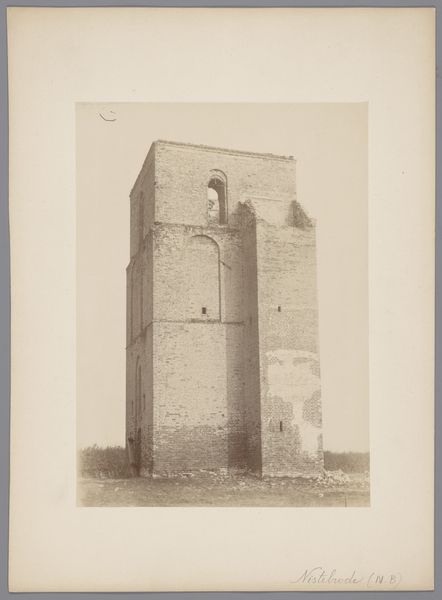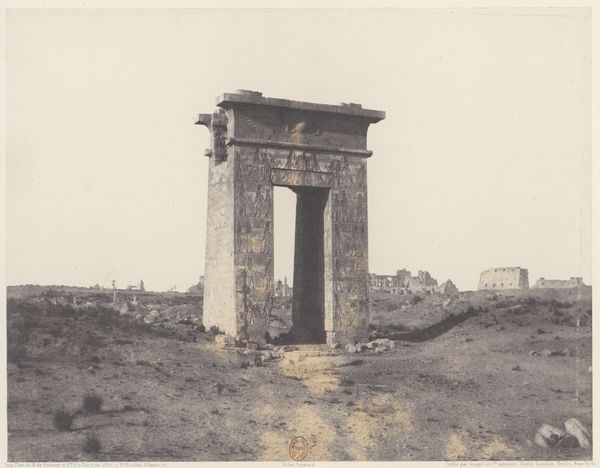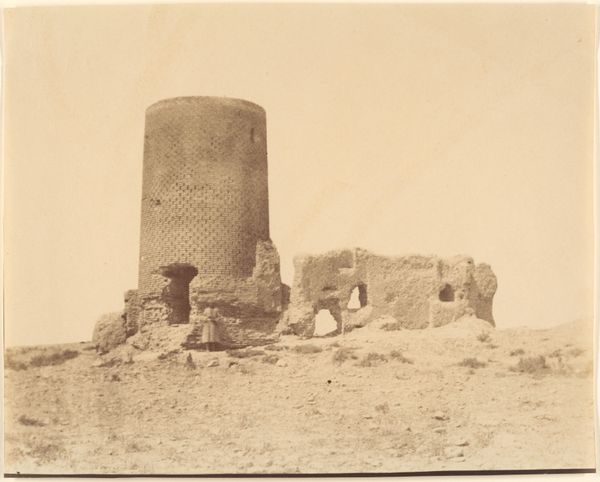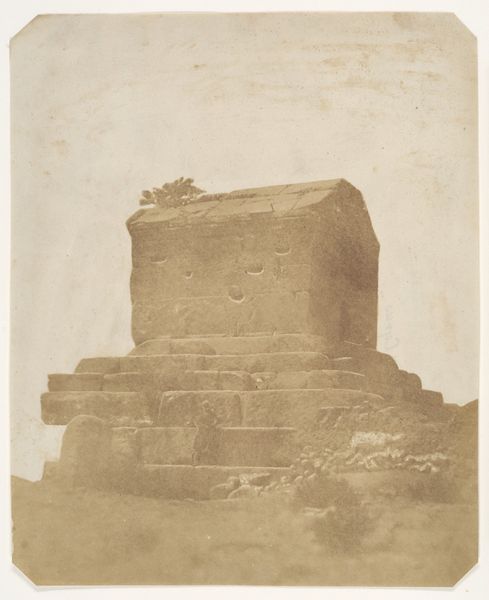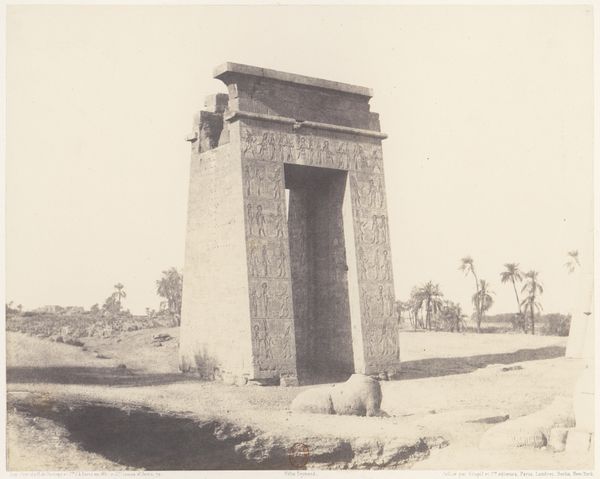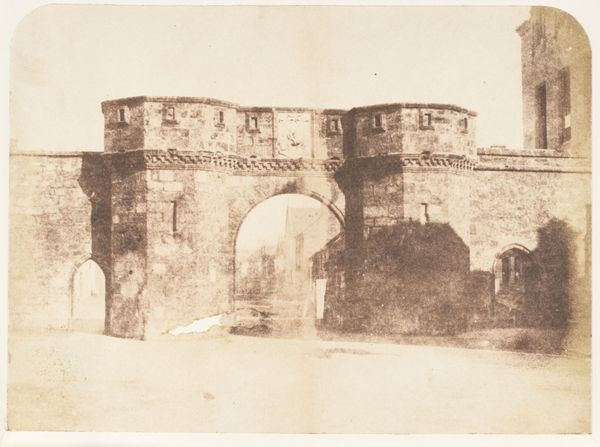
Restanten van de noordelijke pyloon van de tempel van Karnak 1862 - 1895
0:00
0:00
antoniobeato
Rijksmuseum
photography, gelatin-silver-print
#
landscape
#
ancient-egyptian-art
#
photography
#
historical photography
#
ancient-mediterranean
#
gelatin-silver-print
#
19th century
Dimensions: height 257 mm, width 199 mm, height 555 mm, width 466 mm
Copyright: Rijks Museum: Open Domain
Curator: Look at the stark geometry in this gelatin silver print from sometime between 1862 and 1895 by Antonio Beato. What's your first impression of this shot of what's left of the northern pylon at Karnak? Editor: Oh, it’s beautifully haunting. Like a forgotten giant still standing guard. The light’s hitting it just so, almost like it’s breathing its last. The figures at its base emphasize its monumental scale, but are they part of Beato's composition? Curator: Interesting question! I am drawn to understanding how Beato constructed his landscape shots within a shifting matrix of social, technological and political forces. We often think of 19th century photography as 'objective' and documentary but really these were carefully staged representations often deploying local people to create scale. Let's examine the economics and labour practices involved in mounting such expeditions. Consider also that the gelatin silver printing process made possible higher contrasts that captured details such as textures, carved figures, and eroded stones more sharply, giving this historical photo a tangible aesthetic quality. Editor: Ah, the nuts and bolts, as ever, but that context makes it even more affecting for me, understanding the technology. It highlights not just the scene's age, but the image's age, too, both crumbling into our perception. It looks more like a dream this way – that sepia tone works so well! Curator: This is historical photography serving a Western colonial gaze, of course. Beato aimed to document these monuments for an eager European audience interested in Ancient Egypt. Consider the social role of monumental structures: they not only inspire awe but also communicate social hierarchies, values, and power. Editor: Sure. But as a composition it feels much older even, before 'Ancient Egypt' even became ancient! A whisper caught on photographic plate—the people, just incidental ghosts for that split second. Do you suppose that one is scratching an itch? Curator: Well, now I need to examine labour practices and ethnographic methodology with more attention! Perhaps we might consider that the presence of figures animate an otherwise inanimate architectural fragment to evoke scale in the work, as a method of artistic staging! Editor: Yes. Now I will never look at the 'documentary' images the same again. I will remember the staging and the hierarchies. And yet...this ghost does make a nice photograph, doesn’t it?
Comments
No comments
Be the first to comment and join the conversation on the ultimate creative platform.
